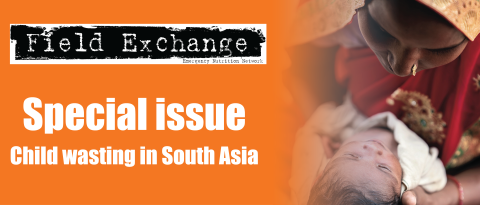Tackling child wasting: A review of costing tools and an agenda for the future
By Lani Trenouth, Emna Kayouli and Minh Tram Le
There is emerging global recognition of the urgency of efforts to reduce child wasting. Of the estimated 47 million children under five years old who were wasted in 2019, just over half lived in South Asia. The overall prevalence of child wasting in South Asia is 14.8% – substantially higher than other regions of the world.1 Given this, the call to action to address child wasting is especially pressing in this region, where governments are seeking to integrate proven treatment and prevention solutions into their national systems.
The financial investment required to implement a nutrition plan is an important element in the process of designing and prioritising nutrition interventions, yet much uncertainty remains around this critical aspect. Accurate costing of nutrition plans is labour-intensive and complex and, while there is a range of costing tools to facilitate analysis, each tool has its own strengths and weaknesses. Moreover, guidance is lacking on detailed analytical choices made during the process of costing an intervention or plan.
In response, the United Nations Children’s Fund (UNICEF) is engaging in a global exercise to facilitate the process of costing nutrition-specific interventions to address child wasting, with the support of its regional offices in the Asia and Africa regions. The result will be a comprehensive review of existing costing tools, an assessment of their applicability for costing nutrition interventions, and a synthesis to provide guidance on which tools are best to use under which circumstances. Country case studies will be carried out to validate the conclusions of the synthesis and to model real-life scenarios to estimate costs of select nutrition interventions in case studies in South Asia and globally. Detailed guidelines will be developed on how to standardise common analytical choices in costing and to generate cost scenarios. The specifics of how wasting interventions may be implemented differently in each region will be factored into the guidelines.
It is anticipated that this exercise will foster greater consistency and transparency in costing processes, thereby improving cost data reliability and comparability and ultimately leading to better data on the cost of nutrition programmes for governments and partners to use in advocacy and planning to support the scaling up of wasting programming. The review of existing cost data of wasting interventions and synthesis of costing tools will be available by the end of 2020, with the costing guidelines to follow shortly thereafter.
For more information, please contact: Minh Tram Le.
1 UNICEF/WHO/The World Bank Group joint child malnutrition estimates: levels and trends in child malnutrition: key findings of the 2020 edition


